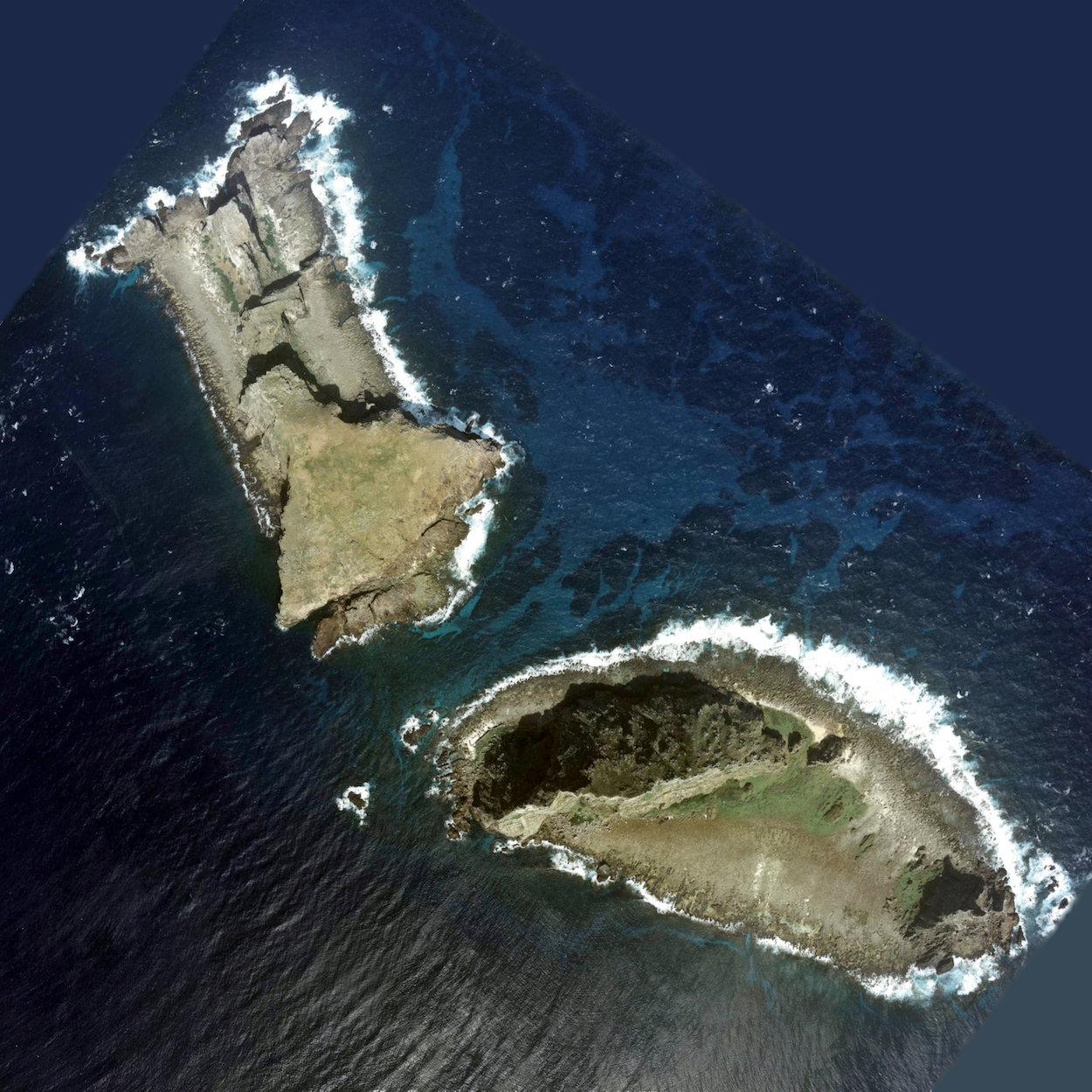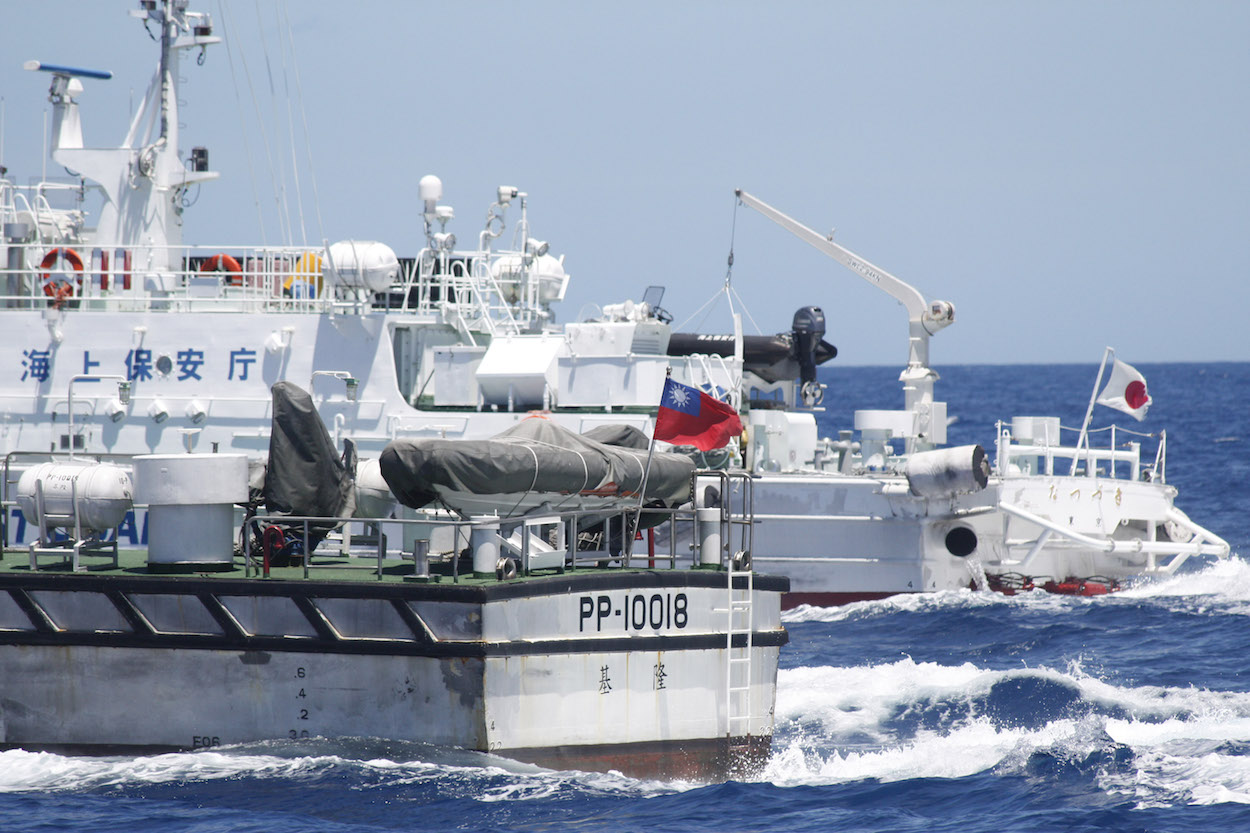by Brian Hioe
語言:
English
Photo Credit: Alper Çuğun/Flickr/CC
A PROPOSAL BY the Ishigaki city government in Japan to rename the disputed Senkaku/Diaoyutai Islands, in order to reaffirm Japanese claims of sovereignty over the island, has been led to nationalistic responses in Taiwan among members of the KMT and members of the pan-Blue camp. This should not be particularly surprising.
The Senkaku/Diaoyutai Islands are a chain of uninhabited islands in the South China Seas. The islands are claimed by the PRC, ROC, and Japan. To the PRC and ROC, the islands are known as the Diaoyutai Islands and are administered under the auspices of Toucheng Township, Yilan. For Japan, the islands are known as the Senkaku Islands and are administered under the auspices of the city of Ishigaki, in the district of Toucheng.
 Two of the disputed islands. Photo credit: National Land Image Information (Color Aerial Photographs), Japanese Ministry of Land, Infrastructure, Transport and Tourism
Two of the disputed islands. Photo credit: National Land Image Information (Color Aerial Photographs), Japanese Ministry of Land, Infrastructure, Transport and Tourism
Consequently, the Ishigaki city government has proposed renaming the islands to the “Tonoshiro Senkaku Islands,” as a means of reaffirming Japan’s claims over the islands. This has led to a counter-proposal from Yilan county magistrate Lin Zi-miao of the KMT and other Yilan politicians to rename the islands as the Toucheng Diaoyutai islands, which provisionally passed.
The proposal is expected to pass. In the wake of the proposal by the Ishigaki city government, a demonstration by pan-Blue political groups took place earlier this month, with criticisms of the Tsai administration for failing to reaffirm the territorial claims of the ROC. Although the Tsai administration has attempted to insist that ties with Japan remain strong, seeing as it an interest in building stronger political and economic relations with Japan to ward off the threat of China, in a statement Ministry of Foreign Affairs spokesperson Joanne Ou condemned the actions of the Ishigaki city government.
In this sense, conflict over the Senkaku/Diaoyutai islands can be seen as a contestation between Chinese and Japanese nationalism, though one notes that the version of Chinese nationalism advocated by the KMT in Taiwan, ROC nationalism, is to be distinguished as a different variety of Chinese nationalism from the CCP’s Chinese nationalism in China. Despite the Tsai administration’s interests in breaking away from the KMT’s ROC nationalism and, in fact, forming closer ties with Japan, it is still forced to maintain the territorial claims of the ROC.
Moreover, it is believed that the PRC, ROC, and Japan are interested in affirming claims of sovereignty over Senkaku/Diaoyutai islands not only because of nationalism, but because of economic interests. Whoever controls the Senkaku/Diaoyutai islands, will have sovereignty over the ocean waters around them, which will allow for fishing rights, and there are thought to be undersea oil reserves around the Senkaku/Diaoyutai islands. To this extent, the Senkaku/Diaoyutai islands could prove a strategic location for countries seeking to expand their geopolitical influence in the South China Seas.
The response to Japanese nationalist efforts to reaffirm claims over the Senkaku/Diaoyutai Islands has been a renewing of Chinese nationalist claims over the islands from the pan-Blue camp in Taiwan. However, it proves a different matter altogether when elements of the pro-unification Left in Taiwan have somehow taken to circulating a petition which denounces Japan’s actions as infringing upon the sovereignty of the ROC, claiming that Chinese territorial claims over the Senkaku/Diaoyutai islands go back to the Ming dynasty.
Indeed, one wonders what is politically left in the slightest about responding to Japanese nationalism by doubling down on Chinese nationalism. This is particularly true seeing as the Senkaku/Diaoyutai Islands are uninhabited and that countries in the region are interested in claiming them do so out of nationalism, with the likely aims of using the islands to advance imperial projects or for the sake of resource extraction.
 Confrontation between the Taiwanese and Japanese coast guard vessels in 2012. Photo credit: Keelung Coast Guard/Public Domain
Confrontation between the Taiwanese and Japanese coast guard vessels in 2012. Photo credit: Keelung Coast Guard/Public Domain
However, the actions of the pro-unification Left should not be surprising. Apart from that, broadly speaking, much of their leftism is simply Chinese nationalism dressed up in the garb of leftism, with the inherent association of the political left with China, a pivotal event in the emergence of the contemporary pro-unification Left in Taiwan was the “Protect the Diaoyutai Islands” movement in the 1980s.
In line with how its purported leftism is in reality a form of Chinese nationalism, the pro-unification Left in Taiwan has the tendency to view anything which opposes Japan or is anti-Japanese as leftist, claiming that this opposes Japanese imperialism. Yet this fails to take into account how actions by the “two Chinas”, the PRC and ROC, against China can be for the sake of advancing geopolitical interests in the region. And the pro-unification sometimes justifies racially charged rhetoric against Japanese in the name of opposing Japanese imperialism, never mind that Japan has a working class of its own, with shared interests with the Chinese and Taiwanese working class.
Outrage from the Taiwanese pro-unification Left regarding the issue of the Senkaku/Diaoyutai Islands is another indicator of its degradation, then, and how it fails to offer anything which is not simply a form of Chinese nationalism at this point.

